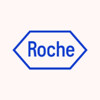
Different PEG-interferon and Ribavirin Schedules for Chronic Hepatitis C in the Real Clinical Practice....
Hepatitis C VirusChronic Liver Disease3 moreHepatitis C virus (HCV) infection provokes thousands of deaths every year all over the world, being the major cause of progressive liver disease, primary hepatic cancer and liver transplantation. Today, a "curative" therapy is available, that can eradicate the viral infection and determine the regression of liver fibrosis, also in cirrhotic subjects. The current standard-of-care for HCV chronic infection is combination therapy with peginterferon (P-IFN) and ribavirin (RBV). However, this treatment is not only expensive but determines several side effects, that can reduce drug tolerance and hence, patient adherence to therapy. There are two types of available P-IFN on the market: P-IFN alfa-2a (Pegasys®, F.Hoffmann-La Roche) administered at a flat-dose of 180 mcg/week and P-IFN alfa-2b (PegIntron®, Schering-Plough) given at a weight-based dose of 50 to 150 mcg/week. Since only a single amino acid differentiates these types of IFN, administration strategies depend on their pegilation with molecules of 40 or 12kDa, respectively, that accounts for differences in the pharmacokinetic and pharmacodynamic drug-profile and influences probably also bioactivity. No comparative data are available on the benefits and costs of the licensed Peg-IFN plus RBV for the treatment of HCV infection in the real clinical practice, even if, the benefit and favourable cost-efficacy of this antiviral therapy is well established and of large consensus. Recently, the first randomized controlled mega-trial to compare antiviral therapeutic efficacy in naïve patients with HCV-genotype 1 infection during different regimens of P-IFN alfa-2b (at low and standard-dose) and P-IFN alfa-2a plus RBV, has been published, confirming a similar efficacy, of around 40%, obtained with the three schedules evaluated. In Italy, a regional program on the Surveillance and Control of HCV Infection, set up by the Regional Health Councillorship, has led to the development of a clinical and epidemiological observatory, constituted by a network of liver tertiary centres (Hepatological Cooperative Network of Veneto, HepCoVe). This collaborative group is connected on-line by a common database that, since 2003, has prospectively collected data on a cohort of more than 3000 patients with chronic HCV infection and, among them, of 506 naïve subjects that consecutively underwent combination therapy with P-IFN alfa-2a or alfa-2b plus RBV. The aim of this study was to rationalize and improve the social regional health program on antiviral treatment of chronic hepatitis C by assessing the different schedules utilization of P-IFN plus RBV as well as the respective therapeutic effectiveness, safety and costs in the real clinical practice (Project A).

A Study of RO5024048 in Combination With Ritonavir-Boosted Danoprevir With or Without Copegus (Ribavirin)...
Hepatitis CChronicThis multicenter, randomized, double-blind, parallel group study will evaluate the safety and efficacy of the combination RO5024048 and ritonavir-boosted danoprevir with and without Copegus (ribavirin) in patients with chronic hepatitis C genotype 1. In arm A and B, interferon treatment-naïve patients will receive 1000 mg RO5024048 orally twice daily and 100 mg danoprevir with 100 mg ritonavir orally twice daily plus either Copegus (1000 mg or 1200 mg orally daily) or placebo for 12 weeks. Depending on viral response and treatment arm patients will be re-randomized to continue assigned treatment for additional 12 weeks or stop all treatment. The anticipated time on study treatment is up to 24 weeks plus a 24-week follow-up. As of 29. September 2011, Arm B patients (placebo-containing arm) will be offered, in conjunction with the current treatment, Pegasys (peginterferon alfa-2a) 180 mcg subcutaneously weekly plus Copegus 1000mg or 1200 mg orally daily for 24 weeks, with a 24-week follow-up.

Adaptive-design Dose Finding Study to Assess the Antiviral Efficacy and Safety of NIM811 Administered...
Chronic Hepatitis C Genotype-1 RelapseThis is a study designed to identify a dose of NIM811 that has a good safety profile, is well tolerated when co-administered with SOC, and provides a clinically meaningful effect in viral load reduction compared to SOC alone. This information will be used to support doses selected for future studies.

Study to Determine the Effectiveness of Antiviral Combination Therapy to Treat Hepatitis C Virus...
Chronic Hepatitis CThe purpose of this study is to determine whether BMS-650032 and BMS-790052 in combination alone, together with Ribavirin, or together with Interferon and Ribavirin are effective in the treatment of Hepatitis C in patients who have not responded to prior therapy.

A Study to Assess the Effectiveness, Safety, and Pharmacokinetics of TMC435 in Combination With...
Hepatitis CChronicThe purpose of this study is to evaluate effectiveness, safety and pharmacokinetics (Explores what the body does to the medication) of TMC435350 in combination with Peginterferon Alfa-2a and Ribavirin in genotype 1 hepatitis C virus infected Japanese participants who have never received treatment for their hepatitis C infection.

Peginterferon Alfa-2a and Ribavirin for Genotype 2 Chronic Hepatitis C: Duration and Ribavirin Dose...
Chronic Hepatitis CTreatment with peginterferon plus daily low dose (800 mg) or weight-based ribavirin (800-1400 mg) for 24 to 48 weeks has achieved 70-93% sustained virologic response (SVR) rates in patients with genotype 2 or 3 chronic hepatitis C (CHC). Recently, a large randomized study has shown that patients with genotype 2 or 3 CHC have comparable SVR rates for those who received peginterferon for 24 or 48 weeks, and who received daily low dose (800 mg) or standard dose (1000-1200 mg) ribavirin. Therefore, the currently recommended treatment for these patients is 24 weeks of peginterferon plus low dose ribavirin. Because of the high response rates, several studies have shown that when these patients had rapid virologic response (RVR), defined as undetectable hepatitis C virus (HCV) ribonucleic acid (RNA) levels, at week 4 of peginterferon plus weight-based ribavirin, 12-16 weeks of treatment could have 82-94% SVR rates. However, treatment with peginterferon plus low dose ribavirin for 24 weeks showed significantly higher SVR rates than that for 16 weeks (85% versus 79%) in these patients who achieved RVR. While studies showed concordant results in SVR rates for patients with genotype 3 CHC who received peginterferon plus low dose or weight-based ribavirin for 16 or 24 weeks, the SVR rates stratified by RVR showed great differences in patients with genotype 2 CHC who received such treatment. Currently, there are no studies on the direct comparison of low dose versus weight-based ribavirin, and of 16 to 24 weeks of treatment stratified by RVR for patients with genotype 2 CHC. The investigators aimed to conduct a randomized trial to determine the optimal ribavirin dose and treatment duration of peginterferon plus ribavirin for patients with genotype 2 CHC based on RVR studies.

Study of Nitazoxanide Combined With Peginterferon Compared to Peginterferon Monotherapy in the Treatment...
Chronic Hepatitis CThe purpose of this study is to evaluate the safety and efficacy of nitazoxanide-peginterferon alfa-2b combination therapy compared to peginterferon monotherapy in patients that are treatment naive or pre-treated for 24 weeks with nitazoxanide monotherapy in the treatment of chronic hepatitis C.

A Study of PEGASYS (Peginterferon Alfa-2a (40KD)) in Patients With Chronic Hepatitis C and Chronic...
Hepatitis CChronicThis single arm study will assess the efficacy and safety of PEGASYS in patients with chronic hepatitis C and end-stage renal disease, including patients on hemodialysis. Patients will receive PEGASYS at a dose of 180 micrograms weekly; those with a calculated glomerular filtration rate of <15mL/min will receive a reduced dose of 135 micrograms weekly. Following 48 weeks of treatment there will be a 24 week period of treatment-free follow-up. The anticipated time on study treatment is 3-12 months, and the target sample size is 100-500 individuals.

Eltrombopag To Initiate And Maintain Interferon Antiviral Treatment To Subjects With Hepatitis C...
Hepatitis CChronicThe purpose of this study is to assess the ability of eltrombopag to maintain a platelet count sufficient to facilitate initiation of antiviral therapy, to minimise antiviral therapy dose reductions and to avoid permanent discontinuation of antiviral therapy. The clinical benefit of eltrombopag will be measured by the proportion of subjects who are able to achieve a Sustained Virological Response (SVR).

A Proof-of-concept Study of VCH-759 for the Treatment of Hepatitis C-infection.
Hepatitis CChronicThe purpose of this study is to determine whether a 10-day course of therapy with orally administered VCH-759 given at 400-mg, 600-mg or 800-mg three times daily can effectively reduce the amount of circulating virus (i.e., viral load) in patients with early-stage chronic hepatitis C-infection. This study will also evaluate the safety and tolerability of treatment with VCH-759. Blood samples will also be taken to measure the levels of VCH-759 present in plasma at various time points during the treatment period.
